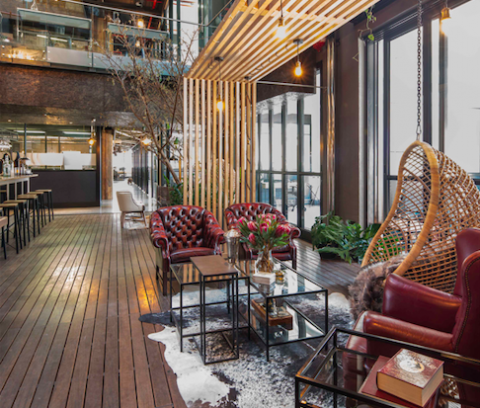Financial Mail Office
The Cubicle Is Dead, So What’s Next?
Over the last couple of decades, improvements in technology and connectivity have given rise to a number of new ways to conduct work. We’re all familiar with concepts like the ‘gig economy’ and remote working. Too many firms, however, hold the view that mobile working is a way to cut costs rather than boost productivity, despite growing evidence that much of the hoped-for benefits of mobile working in this regard are coming true.
But that’s changing, according to the Fifth Biennial Global Benchmarking study on Alternative Workplace Strategies, conducted by Advanced Workplace Associates (AWA), Global Workplace Analytics and
Haworth Inc. The study surveyed 130 organisations from across the world, and for the first time in its history, cost-saving as a reason dropped to below employee productivity as the most important reason for adopting alternative strategies. Even so, only 30% of organisations measure productivity gains and use them as a benchmark for the success of a project to introduce new working practices.
This is an oversight. If the South African knowledge economy utilised flexible working hours, for example, it could add an estimated R17-billion to the economy, notes a study by Citrix and the Centre for Economics and Business Research. This value was calculated by looking at the increased productivity through remote working via the internet (adding 0.4% to GDP), and a cut in commuting costs by R39.5-billion.

Other benefits of alternative workplace strategies include access to a much wider talent pool than only hiring people who can physically get to an organisation’s offices.
However, as productivity increases, employee engagement is decreasing. A pivotal finding from the Alternative Workplace study is an increase in respondents who indicated “difficulty getting feedback from their managers”. This doubled since the 2013 survey to 54% who strongly agreed.
This is likely because managers are also going remote, making face-to-face communication harder. Former Yahoo! CEO Marissa Mayer famously banned 12 000 employees from telecommuting. Her memo states: “Some of the best decisions and insights come from hallway and cafeteria discussions, meeting new people, and impromptu team meetings.”
Inside outside
Was she right? Shortly after the announcement, Yahoo! reported increased productivity and a spike in product launches. Gallup’s State of the American Workplace report found that people who work remotely are more engaged, enthusiastic and committed to their work, so long as they stay in the office at least 80% of the time.
People tend to be more productive when they’re alone. But they’re more innovative together.
This is why the Alternative Workplace study found an increasing number of employees offering unconventional workspaces within the organisation’s premises. This was the only type of alternative workplace strategy to grow between 2009 and 2017, with the number of co-working spaces and satellite offices falling. This signifies there’s still value attached to bringing people together in one space.
Linda Trimm, Sales and Marketing Director for Giant Leap, an office design specialist, has noticed the same trend in South Africa.
“Companies are implementing agile working rather than co-working,” says Trim. “Companies should create a network of zones where their employees can break away and work in a flexible manner. Work doesn’t only have to happen at your desk.”
Innovative furniture like the ‘Hive’ range provides modular flexible seating with built-in technology including Wi-Fi, Bluetooth, device-charging pads and smart TVs. Furniture pods can be configured to be semi-private or private spaces and establish different zones without needing to build walls.
“It’s all about giving people choice over where to work and how to use the space,” says Trimm.






 Sign-up and receive the Business Media MAGS newsletter OR SA Mining newsletter straight to your inbox.
Sign-up and receive the Business Media MAGS newsletter OR SA Mining newsletter straight to your inbox.